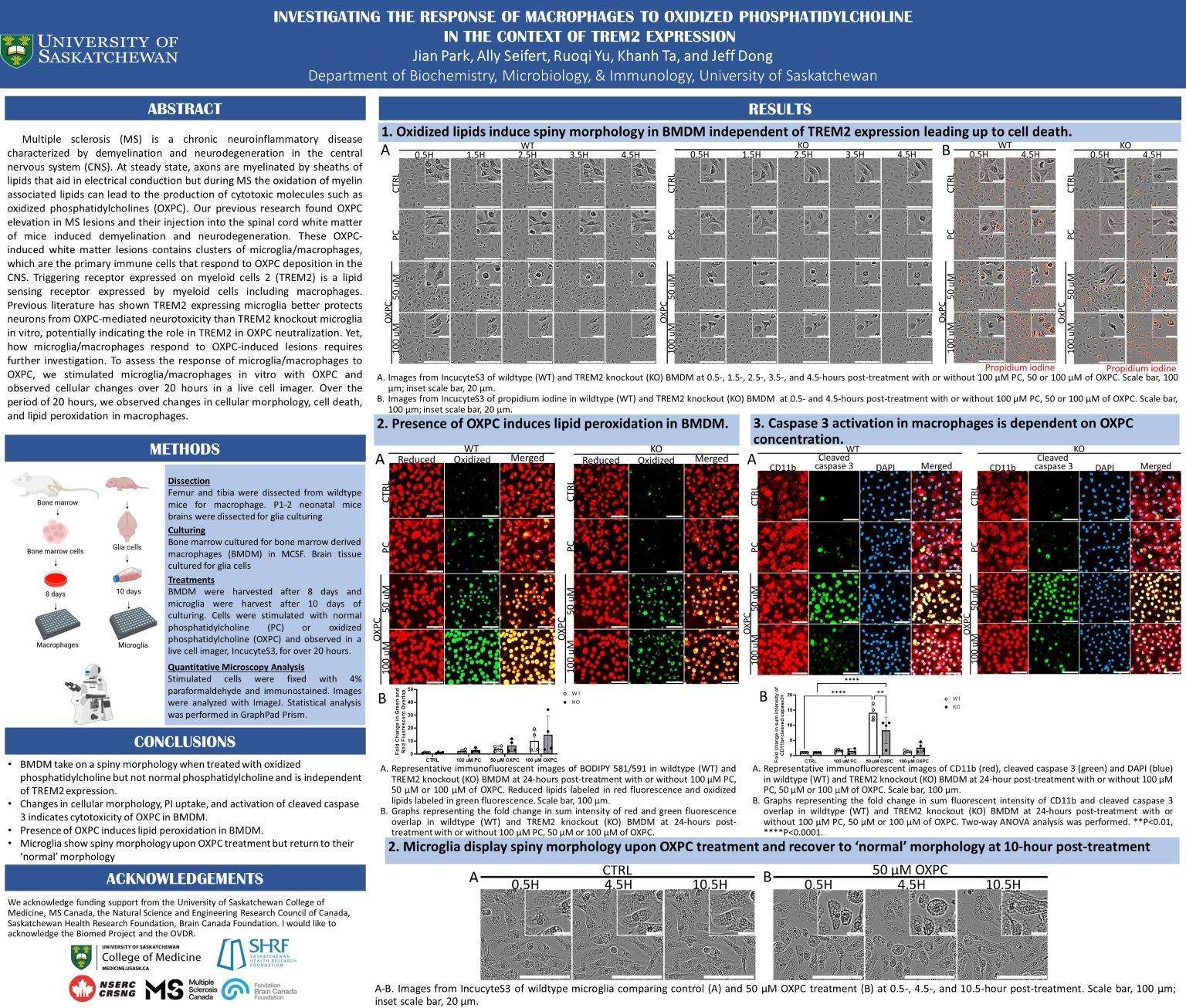
Investigating the Response of Macrophages to Oxidized Phosphatidylcholine in the Context of Trem2 Expression
Jian Park
Multiple sclerosis (MS) is a chronic neuroinflammatory disease characterized by demyelination and neurodegeneration in the central nervous system (CNS). At steady state, axons are myelinated by sheaths of lipids that aid in electrical conduction but during MS the oxidation of myelin associated lipids can lead to the production of cytotoxic molecules such as oxidized phosphatidylcholines (OXPC). Our previous research found OXPC elevation in MS lesions and OXPC injections into the spinal cord white matter of mice induced lesions containing clusters of microglia/macrophages, innate immune cells. Triggering receptor expressed on myeloid cells 2 (TREM2) is a lipid sensing receptor expressed by myeloid cells including macrophages. Previous literature has shown TREM2 expressing microglia better protects neurons from OXPC-mediated neurotoxicity than TREM2 knockout microglia in vitro, potentially indicating the role of TREM2 in OXPC neutralization. Yet, how microglia/macrophages respond to OXPC-induced lesions requires further investigation. To assess the response of microglia/macrophages to OXPC, we stimulated microglia/macrophages in vitro with OXPC and observed cellular changes over 20 hours in a live cell imager. Over the period of 20 hours, we observed changes in cellular morphology, cell death, and increase in lipid peroxidation in OXPC treated macrophages.
